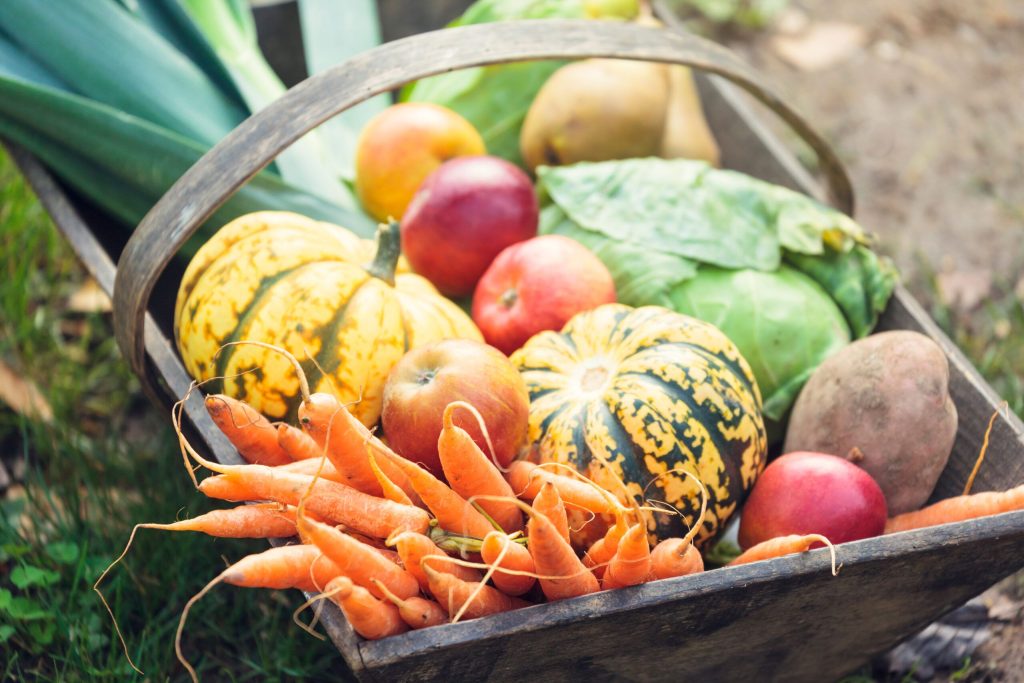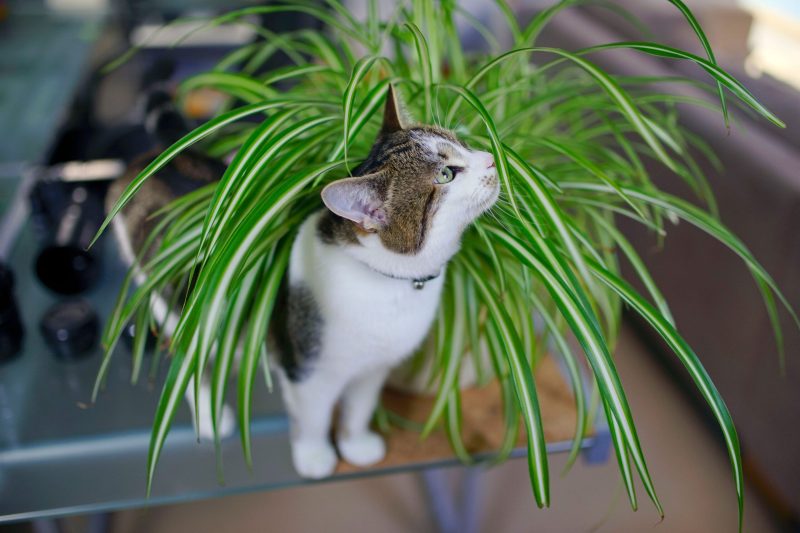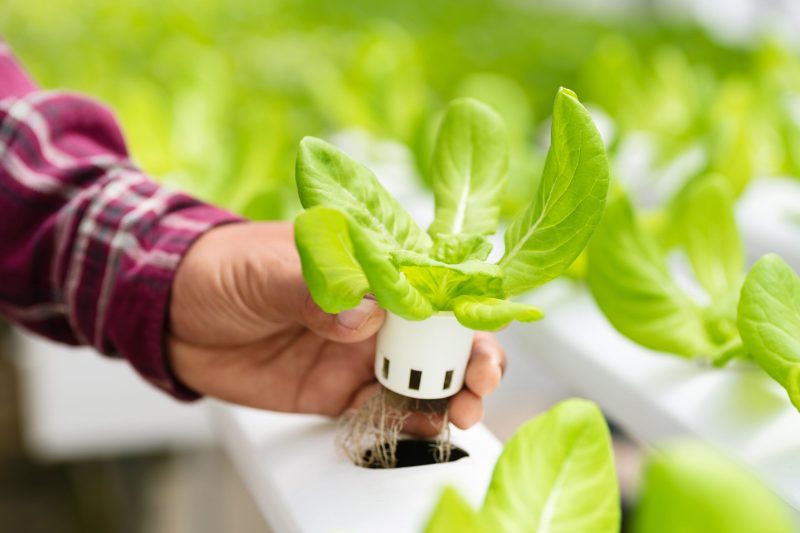Best Vegetables to Grow in a Fall Garden

Fall gardening is a great opportunity to extend your growing season and enjoy fresh, homegrown produce in cooler months. With the right planning and plant selection, you can grow an autumn harvest that competes with your summer fruits and vegetables. This guide explores the best vegetables to grow in the fall, along with some tips for success.
Understanding The Fall Growing Season
The fall growing season has both opportunities and challenges for gardeners. As temperatures cool and daylight hours decrease, certain vegetables thrive while others struggle. Understanding these dynamics is key to a successful harvest.
Benefits Of Fall Gardening
With the cooler temperatures, fall gardening brings out the best in many vegetables, with stronger flavors and a sweeter taste. The mild conditions also mean less watering is required as moisture loss through evaporation decreases. Pest and disease pressures also tend to be lower in autumn, creating a better environment for your plants.
Challenges Of Fall Gardening
While fall gardening has its perks, there are a few challenges. One issue is bolting, which occurs when temperature spikes cause plants to prematurely produce flowers and seeds instead of edible parts. Leafy greens are particularly susceptible to bolting, though it can affect root vegetables, too. Another challenge is the time constraints since you need to harvest before winter. However, with planning and good plant selection, these issues can be prevented.
Planning Your Fall Vegetable Garden
Successful fall gardening starts with careful planning. By understanding your local climate and choosing appropriate plants, you can set yourself up for a nice autumn harvest.
Determining Your Frost Date
The first step in planning your garden is to determine your area’s average first frost date. This varies depending on your location and can impact which vegetables you can grow successfully. Local agricultural extension offices or online resources can provide this information for your specific region.
Calculating Growing Time
Once you know your frost date, you can work backward to determine when to plant your fall vegetables. Add up the days to maturity for each vegetable you want to grow, then add an extra two weeks to account for slower growth due to shorter days. This will give you an idea of when to start your garden.
Quick-Growing Fall Vegetables
For gardeners short on time or looking for quick results, several fast-growing vegetables are perfect for planting in the fall. These crops can provide a harvest in three to eight weeks.
Leafy Greens For Fast Harvests
Leafy greens are among the quickest vegetables to mature in fall gardens. Some choices include mustard greens, spinach, lettuce, and arugula. Mustard greens take about 21 days to grow, and spinach, lettuce, and arugula grow in about six to eight weeks. These vegetables grow quickly and can tolerate light frosts, extending your harvest season.
Root Vegetables Ready In Weeks
Several root vegetables, including radishes, turnips, and beets, also offer quick returns in fall gardens. Radishes can be ready in as little as three weeks, while turnips harvest in about 60 to 90 days, and beets are ready in just under two months. These root crops often become sweeter after light frosts, making them perfect for fall gardens.
Slow-Growing Fall Vegetables
While some gardeners focus on quick harvests, others prefer longer-growing vegetables. These crops take more time to mature but have more substantial yields and unique flavors.
Brassicas For Cool-Weather Harvests
Brassicas, or cruciferous vegetables, are well-suited to fall gardens as they improve in flavor after light frosts. These include broccoli, brussels sprouts, cabbage, and cauliflower. Broccoli needs to be planted at least 100 days before the first frost, brussels sprouts need about four months to grow, and cabbage and cauliflower take about 70 days to grow.
Long-Season Root Crops
Some root vegetables require a longer growing season but produce flavorful crops. Carrots, leeks, and rutabaga are all fairly easy to grow and store well, providing homegrown vegetables into winter. These crops all take up to four months to mature but can resist light frosts, though it’s best to plant them 10 to 12 weeks before the start of winter.
Care Tips For Fall Vegetables
Proper care is necessary for a successful fall garden. As the seasons change, your gardening practices should adapt to meet the needs of your autumn crops.
Watering Practices In Cooler Weather
Fall gardens require less frequent watering than summer gardens because of the cooler temperatures. However, consistent moisture is still important for healthy plant growth. Water deeply when the top inch of soil feels dry, and use mulch to retain soil moisture and regulate temperature.
Protecting Plants From Early Frosts
While many fall vegetables can tolerate light frosts, sudden cold snaps can damage them. Protect your plants using row covers or cold frames to create a warmer microclimate. You should also cover plants with blankets or tarps on chilly nights and water plants before a frost, as moisture retains heat better than dry soil.
Extending Your Garden’s Harvest Season
With some planning and the right techniques, you can extend your fall gardening well into the colder months to give you a steady supply of fresh vegetables.
Using Cold Frames And Row Covers
As mentioned above, cold frames and row covers are valuable tools for gardeners. These create protected environments that trap heat and shield plants from harsh weather. Cold frames are essentially miniature greenhouses, while row covers are lightweight fabrics draped over plants. Both can extend your growing season by protecting plants from frost and maintaining warmer temperatures.
Succession Planting Techniques
Succession planting involves sowing crops at regular intervals rather than all at once. This technique provides you with continuous harvest throughout the fall. For example, you might plant a new row of lettuce every two weeks. As you harvest the mature plants, younger ones are ready to take their place, giving you a steady supply of fresh greens.
Regional Considerations For Fall Gardening
Fall gardening practices vary significantly depending on your location. Understanding your regional climate is important so you can select the right vegetable and time your plantings correctly.
Best Fall Vegetables For Northern Climates
In northern regions with earlier frost dates, focus on cold-hardy vegetables that can withstand light freezes. Good choices include kale, collards, and kohlrabi. All of these should be planted about two months before the first frost, but they can thrive in cool weather and improve in flavor after the winter season starts.
Fall Gardening In Southern Regions
Southern gardeners have a longer fall growing season, allowing for a wider variety of crops. In addition to the vegetables mentioned above, you can plant Swiss chard, broccoli, and peas. Swiss chard is ready about 60 days after planting and can tolerate cold temperatures. While peas are often considered a spring crop, they thrive in cooler temperatures in southern regions.
Crop Rotation and Soil Health for Your Garden
Implementing crop rotation in your fall garden is a good practice for maintaining soil health and increasing yields. Rotating crops helps prevent the buildup of pests and diseases and helps the nutrients in the soil be used more efficiently.
Benefits of Crop Rotation
Crop rotation brings many benefits to your fall garden, including pest and disease control and soil nutrient management. By rotating crops, you interrupt pest and disease cycles, reducing their impact on your garden. Crop rotation also helps balance nutrient use, preventing soil depletion and resulting in healthier plants.
How to Practice Crop Rotation
To implement a crop rotation in your fall garden, group plants by family and create a schedule. Rotate crops from different families each season; for example, follow leafy greens with root vegetables. Create a multi-year plan to systematically rotate crops to maintain soil health and productive growth.
Raised Beds for Fall Gardening
Raised beds are a great technique that can produce higher crop yields. They have many advantages, including improved soil drainage, better root growth, and easier access to planting and harvesting.
Advantages of Raised Beds
Raised beds allow you to customize and control the soil quality to meet the needs of your fall vegetables. The elevated soil in raised beds prevents waterlogging and improves drainage, reducing the risk of root rot and other moisture-related issues. Raised beds warm up quicker in the spring and maintain warmth longer in the water, extending your growing season.
Building and Maintaining Raised Beds
To build and maintain raised beds for your fall garden, choose the right materials, use quality soil, and keep up with regular maintenance. Select rot-resistant materials to construct your raised beds, avoiding treated wood as it may contain harmful chemicals. We suggest using cedar or recycled plastic lumber if you’re building them yourself.
Use a high-quality soil mix that combines compost, garden soil, and other organic matter to provide the essential nutrients for your plants. Keep your raised beds weed-free and replenish the beds with fresh compost annually to maintain soil fertility and structure.
Companion Planting Strategies for Fall Gardens
Companion planting is a common gardening practice that involves growing certain plants together for better growth, less pests, and improved garden health. This strategy can be particularly beneficial in the fall.
Benefits of Companion Planting
Companion planting provides many benefits. Certain plants repel pests or attract beneficial insects that prey on garden pests, reducing the need for chemical interventions. Some plant combinations can improve growth by providing shade, support, or nutrients to neighboring plants. Lastly, dense plants provide ground cover, minimizing weed growth.
Effective Companion Planting Combinations
To make the most of companion planting in your fall garden, there are a few popular combinations that work well together. Plant basil near tomatoes for a stronger flavor and to repel pests. Grow beans alongside corn to use vertical space and enrich soil with nitrogen. Pair carrots and onions together to deter carrot flies and onion pests.
Fall Gardening Tools and Equipment
Having the right tools and equipment is important for a successful garden. Proper tools can make planting, maintaining, and harvesting your garden more efficient and enjoyable.
Tools for Fall Gardening
Invest in these tools for your fall garden:
- Garden Fork: Ideal for turning soil, incorporating compost, and preparing garden beds for planting.
- Hand Trowel: Perfect for transplanting seedlings, planting bulbs, and small digging tasks.
- Pruning Shears: Necessary for trimming plants, harvesting vegetables, and promoting plant health by removing dead or damaged growth.
- Rake: Useful for leveling soil, collecting leaves, and maintaining garden beds.
Equipment for Extended Growing Seasons
To extend your fall harvest, use the following specialized equipment:
- Floating Row Covers: Lightweight fabric covers that protect plants from frost while allowing light, air, and water penetration.
- Hoop Houses: Structures that create a greenhouse effect, providing warmth and protection for your plants during cooler weather.
- Mulch: Organic materials such as straw or leaves can insulate soil, retain moisture, and suppress weeds, promoting healthy growth during fall.
Our Conclusion
Fall vegetable gardening is a rewarding way to extend your growing season and enjoy fresh, homegrown produce well into the cooler months. By understanding your local climate, selecting appropriate vegetables, and following season-extending techniques, you can create a beautiful autumn harvest. With proper planning and care, your fall garden can be just as productive and satisfying as your summer one.







